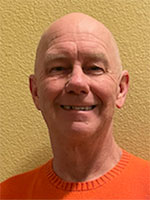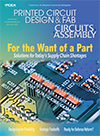Features Articles
 IEEE's annual conference of academic and research leaders reveals equipment and process advances.
IEEE's annual conference of academic and research leaders reveals equipment and process advances.
The heat wave covering much of the Rocky Mountains in June was an apt metaphor for the annual IEEE Electronics Components and Technology Conference (ECTC) in Denver, where some 2,000 attendees heard the latest developments in advanced packaging. Thermal issues were as much a part of the proceedings indoors as out.
The conference in the Mile High City opened with a Heterogeneous Integration Roadmap (HIR) session. Presentations addressed the thermal challenges and specifically called out the needs for developments in metrology focused on thermal measurement. The conversation carried over into a parallel special session on metrology where participants from NIST, ASE, Intel, TSMC and KLA discussed challenges and opportunities in advancing metrology for next-generation microelectronics. The discussion culminated with a call to action to incorporate metrology challenges in every aspect of the HIR moving forward and potential for a future NIST workshop.
 Our passion for technology can improve services and life experiences for everyone.
Our passion for technology can improve services and life experiences for everyone.
Many of us working in the electronics business, wherever we are in the value chain – from design to manufacturing, as well as marketing, sales and support – are more than simple creators of technology. We are also fans, adopters and evangelists. As a species, we have always pursued technologies with the goal of making our lives better.
It's in the interest of humanity that more people can use the technologies we create. Many powerful technologies that define the world we live in today began life as the invention and plaything of a small number of expert users: search engines, digital image sensing, blockchain, AI, even the internet itself, started this way but have become widely used to the advantage of all. This technological democratization is not a new phenomenon. The invention of the printing press is often cited as an early example. In addition to expanding and accelerating the spread of information, its arrival also enhanced the accuracy of the data shared by reducing human error.
For as long as there is invention, action will be needed to mitigate the divide that separates the technological haves and have-nots. The World Economic Forum points out that digital technologies are a driver for fairness and justice, and that equalizing access is essential to safeguard security and human rights. We can celebrate the fact that information services, banking, e-government, and e-health are already widely available and affordable, even in regions that have minimal fixed infrastructures.
 Put the pedal to the metal in your PCB layouts.
Put the pedal to the metal in your PCB layouts.
Printed circuit board design evolves over time and the rate of the evolution is not slowing. High-speed digital design becomes a key topic as we move forward.
By the time you read this, I’ll be officially old. Early retirement age is 62 and I was born in ’62 so I’m eligible for those senior discounts. One of the things that happens as we age is time seems to go by even faster. We’ve seen so much, less is novel. We’re not plowing new furrows but rather deepening ones we’ve tracked before.
I say that to say this: Circuits keep switching faster all the time. What worked in my early days no longer gets it done. My first computer didn’t have a hard drive. It had two floppy disk drives, and they were the ones with 360KB rather than the smaller, stiffer 1.4MB. I had DOS on one floppy and a modem driver on the other. The baud rate was a blazing 1,200B.
 Take proactive steps to minimize the impact of growing material prices.
Take proactive steps to minimize the impact of growing material prices.
Overseas board manufacturers have received formal notifications from major laminate suppliers about upcoming double-digit price increases for the raw materials required to produce printed circuit boards.
Compared to this time last year, gold and copper prices have risen significantly due to inflation, the push for green energy, and speculative demand and capacity limitations for these precious metals in the coming years.
While most notifications were heavy on apologies but light on details, one was specific about the increases:
 Know the “whys” behind each clause in the manufacturing agreement.
Know the “whys” behind each clause in the manufacturing agreement.
Partnership is one of the most hackneyed terms in the electronics manufacturing services (EMS) industry. It often gets used to describe business relationships that are anything but partnerships. At the same time, the best EMS relationships actually are partnerships where parties have a symbiotic relationship beneficial for both companies. What drives these different relationships in the same business model? Often the answer is the program manager.
Back when outsourcing was a new concept, the most experienced employees at an original equipment manufacturer (OEM) were assigned the responsibility for the relationship. In many cases, those executives had manufacturing as well as purchasing experience. When demand or allocation surprises occurred, these experienced teams worked together for a good resolution in most cases. Today, contract manufacturing is just one more thing that most OEM purchasing departments source and manage. Buyers may or may not have ample experience managing EMS suppliers, particularly given the volume of turnover in these roles. Less experience translates to a focus on unit price, less ability to understand the impact of errors in forecasting, and difficulty in understanding issues that excess material creates.
 What to make of the technology that unites industries and those who run them.
What to make of the technology that unites industries and those who run them.
While concerns still abound, life has returned to some semblance of normal in the post-Covid world. While most were hunkered down for months or years thanks to restrictions on travel and social distancing protocols, those times are now behind us and, at least in my case, I am traveling as much as ever. While glad to be able to travel once again and see people in person, I have been reintroduced to many of the accompanying irritants, such as long lines at airport security and flight delays caused by weather or tardy flight crews. On the positive side, however, I am continually reminded of how it truly is really a small, small – and interconnected world – after all.
During the worst of Covid, I thought the world was small thanks to technologies such as Zoom, Teams, etc., that enabled people from virtually anywhere on the globe to communicate and be seen – in real time – by colleagues, friends or family via a few simple keyboard clicks. While not the same as being in person, the technology enabled the next best thing – instantaneous interaction.
Press Releases
- Altus Reports Growing Demand for Guidance on Convection Reflow Oven Specification
- Coherix Opens New Adhesive-Dispensing Vision Center in Europe
- Pan Pacific Strategic Electronics Symposium Program Finalized
- The Most Critical 2 Inches in SMT Manufacturing – When a Splice Fails, the Line Fails, Full Stop. Throughput and Yield Depend on One Overlooked Moment


